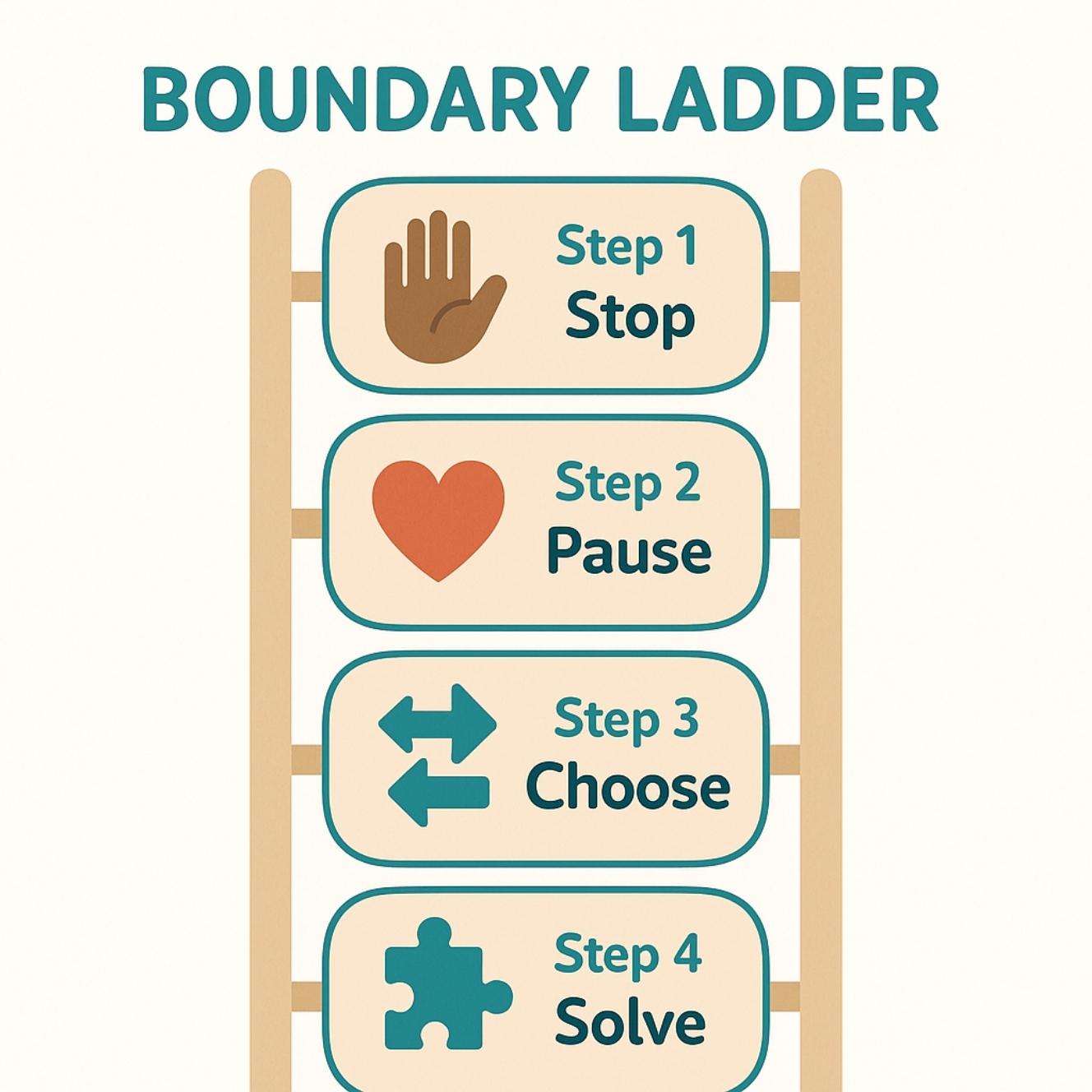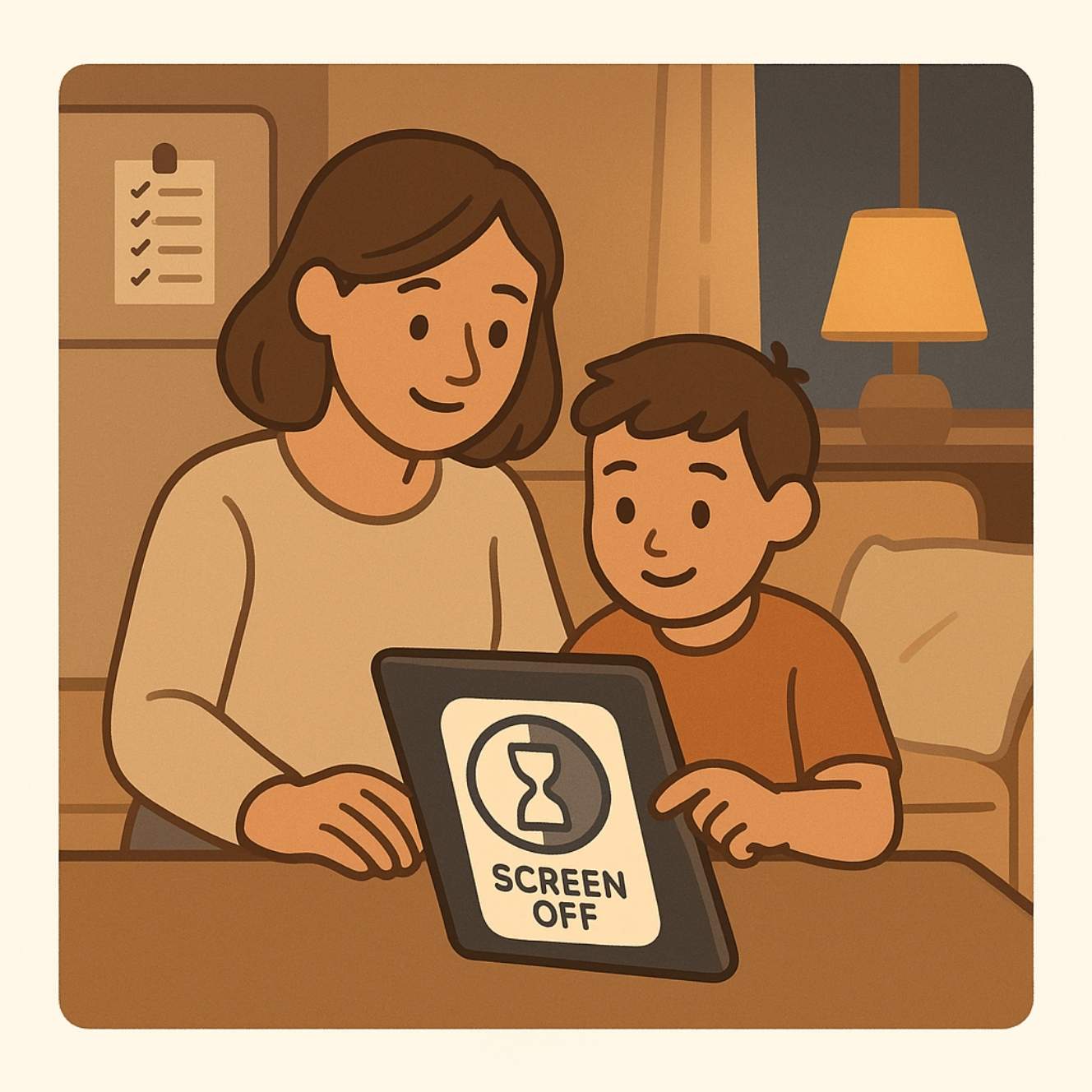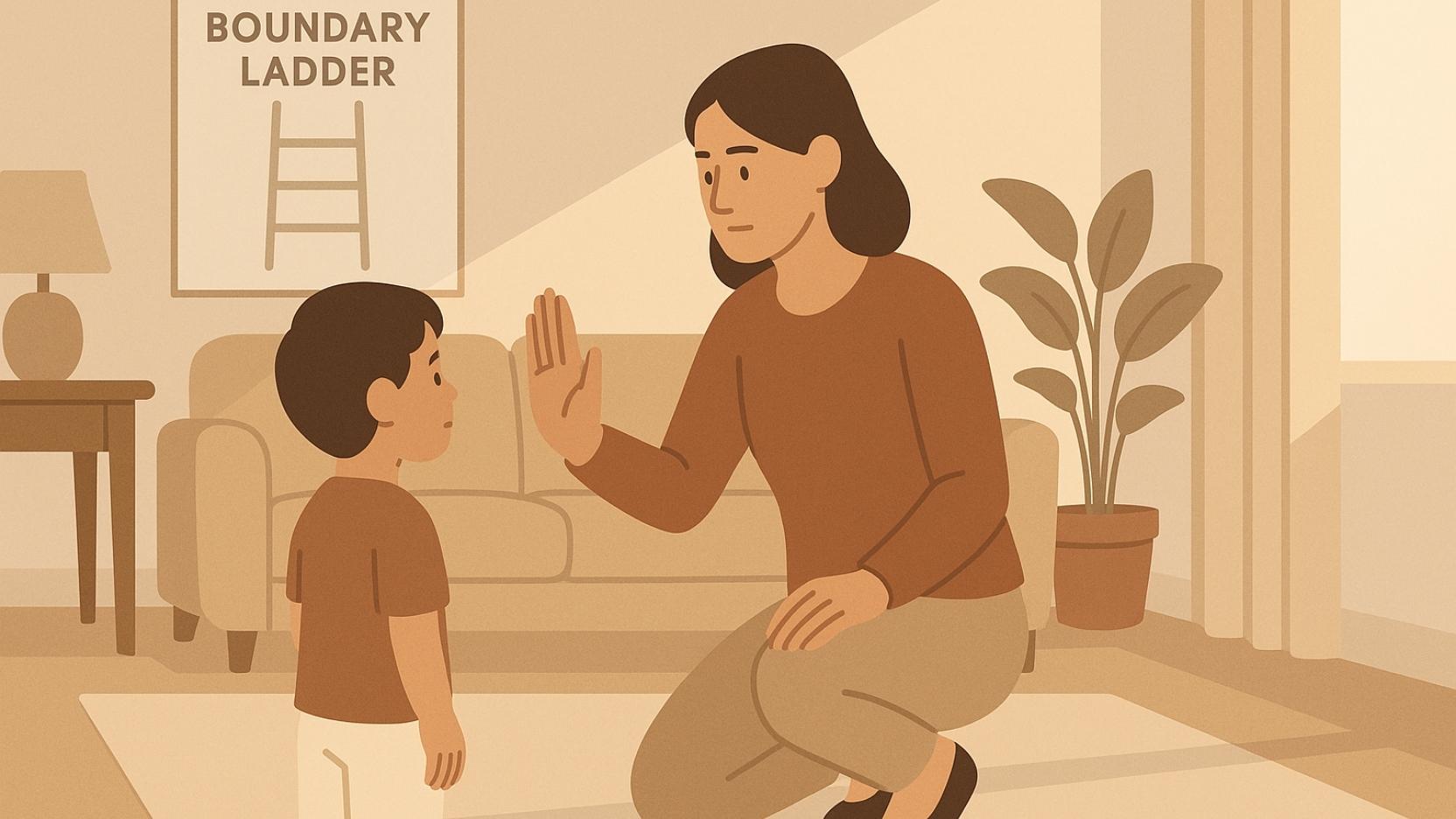Parenting doesn’t need to run on fear, threats, or public call-outs. A shame-free discipline system treats misbehavior as a skills gap—not a character flaw—so you can teach limits while protecting connection. Think of it like upgrading from a loud alarm to a smart guidance system: firm boundaries keep everyone safe 🚦, while empathy and practice build the self-control kids will actually use when you’re not there.
This guide shows why shame is a short-term fix, then introduces a step-by-step Boundary Ladder you can rely on in hard moments. You’ll also get scripts for five common flashpoints (hitting, lying, swearing, chores, tech), a quick primer on natural/logical outcomes vs. punishments, and simple ways to track progress 📈 so you know it’s working.
Why shame backfires (short-term compliance vs. long-term skills) 😔➡️🧠
Shame often “works” in the moment because kids want to avoid disapproval. But the real lesson becomes “don’t get caught” rather than “how to handle big feelings.” Shame turns attention inward—What’s wrong with me?—instead of toward the skill you’re teaching—How do I stop and repair?
Neurologically, shame spikes stress, which shrinks access to the thinking brain. You might get quick obedience, but you pay in future meltdowns, sneakiness, or freezing. Long-term discipline is about transfer—kids doing the right thing when you aren’t looking. That requires calm coaching, repeatable steps, and chances to practice—not character attacks.
A helpful analogy: shame is a pop-up blocker that interrupts the behavior for a second; boundaries plus coaching is antivirus—preventing and repairing at the source. One silences, the other teaches.
The Boundary Ladder: limit → empathy → choice → repair 🪜💬
Use this sequence in order; keep it brief, warm, and consistent:
- Limit (Stop the harm) ⛔
“I won’t let you hit. My job is to keep bodies safe.” (Move the object, step between siblings, or pause the activity.) - Empathy (Name the feeling) 🤝
“You’re so frustrated your tower fell. That’s really hard.” (Regulate with your calm voice and body.) - Choice (Offer two workable options) 🔀
“You can take three big squeezes on the pillow or we can rebuild together. Which helps your body?” - Repair (Make it right) 🧩
“Let’s check on your sister’s arm and bring an ice pack. Then you can rebuild the tower or draw a ‘sorry’ note.”
Common tips:
- Keep phrases short (8–12 words).
- Repeat the ladder; don’t debate the rule.
- Practice outside of conflict so choices feel familiar.

5 common situations with step-by-step responses 🧩
1) Hitting 👊
Limit: “I won’t let you hit. Hands stay on your own body.” (Hold wrists gently if needed.)
Empathy: “You wanted the red truck and felt blocked.”
Choice: “Hands can squeeze this ball or stomp five times.”
Repair: “Let’s check if your brother’s okay and offer the truck when your turn ends.”
Practice prompt (later, when calm): “Show me strong hands: where can they go when you’re mad?” (Wall push, pillow squeeze.)
2) Lying 🤥
Limit: “I need true words in our home.”
Empathy: “It’s scary to tell the truth when you think you’ll be in trouble.”
Choice: “Tell me the true story now and we solve it together or write it and hand me the note.”
Repair: “We’ll fix the marker on the wall together and set where markers live.”
Coach the skill: “Truth earns more help. Next time, say: ‘I made a mistake—can you help me fix it?’”
3) Swearing 🗣️
Limit: “Those words aren’t for home.”
Empathy: “You’re bursting with big feelings.”
Choice: “Say ‘I’m furious!’ or use our angry card to show me. Which?”
Repair: “Try again with respectful words. Then we can keep playing.”
Teach a replacement: Create a feelings menu with strong but respectful phrases kids can choose.
4) Chores 🧹
Limit: “Plates go to the sink before play.”
Empathy: “It’s tough to stop mid-game.”
Choice: “Carry your plate now or after a two-minute timer.”
Repair: “If food spills, we wipe together—then game resumes.”
Scaffold: Make the first step tiny (plate to sink only) and celebrate completion to build momentum.
5) Tech 📱
Limit: “Screens off at 7:30.”
Empathy: “Cliff-hangers make stopping hard.”
Choice: “Shut down now and pick tomorrow’s show or I’ll pause and we finish after teeth.”
Repair: “If shutdown runs late, tomorrow’s start time moves later accordingly.”
Design for success: Use two timers (5-minute warning, 1-minute cue) and a visible ‘Off Checklist’ (save game → plug in → park device).

Natural/logical outcomes vs. punishments: what’s the difference? ⚖️
Punishments aim to make a child feel bad for doing wrong. Natural/logical outcomes help a child learn what to do next time by connecting action and result.
| Tool | What it is | Examples | Likely effect |
|---|---|---|---|
| Punishment 🚫 | Arbitrary suffering unrelated to the behavior | “No soccer for a week because you yelled.” | Short-term compliance, long-term resentment; sneaky behavior |
| Natural outcome 🌱 | What happens on its own | Throw toy → toy breaks; refuse coat → feel cold (when safe) | Reality teaches without lecturing |
| Logical outcome 🧭 | Adult-designed, related and respectful | Throw blocks → blocks take a break for 10 min; spill → clean together | Builds accountability and skills |
How to check your outcome: Is it related, reasonable, revealed in advance when possible, and delivered respectfully? If yes, you’re in teaching territory—not shaming.
Measuring progress (fewer escalations, faster recoveries) ⏱️📈
Track the system, not just the child. Look for trend lines over perfection:
Core metrics (weekly):
- Escalations per day 🔥: count incidents that required adult step-in.
- Time-to-calm 🕒: minutes from limit to regulated state.
- Repair rate 🧩: % of incidents followed by a repair step.
- Successful transitions 🔁: # of smooth handoffs (e.g., off tech to teeth).
- Independently chosen coping skills 💪: times the child used a tool without prompting.
Simple log (2–4 weeks):
- Mon: 3 escalations; avg calm 6 min; repairs 2/3; coping skill used: wall push.
- Fri: 1 escalation; calm 3 min; repairs 1/1; coping skill used: timer card.
What improvement looks like:
- Fewer blowups, and when they happen, they resolve faster.
- Kids start predicting the next step (“I’ll get the ice pack”) and choosing from the coping menu.
- Adults sound more like a scripted team than referees—short phrases, same order, less lecturing.
Troubleshooting tips:
- If you repeat limits endlessly, your choices may not be truly workable—shrink them and practice outside conflict.
- If repairs stall, make them small and immediate (ice pack, quick wipe) before any long talk.
- If tech drives most fights, improve predictability (timers, posted plan) before adding outcomes.
Quick scripts you can steal 🗂️
- “I won’t let you ___; bodies stay safe. You’re mad. Squeeze pillow or stomp five times—your choice. Then we repair.”
- “True words get you more help. Tell me what happened so we can fix it.”
- “Screens off at 7:30. Timer now or after teeth?”
- “Plates to the sink, then play. Two-minute timer or now?”
Wrap-up 🌿
Shame may stop a moment; boundaries teach a lifetime. With a predictable ladder, connected outcomes, and simple metrics, your family can replace power struggles with steady practice. Keep phrases short, repeat the sequence, and trust the trend lines—fewer escalations and faster recoveries mean your system is working.





